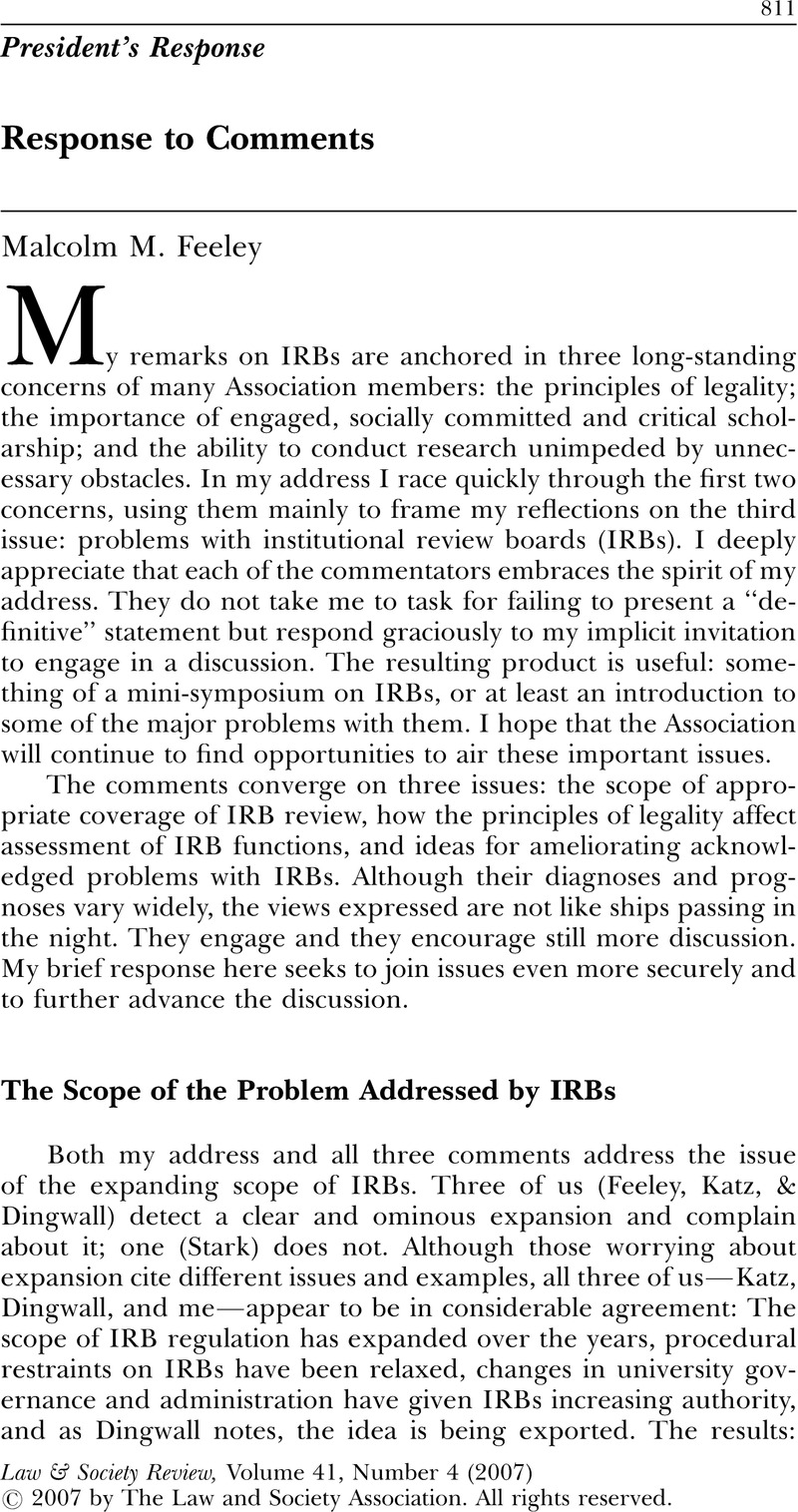Crossref Citations
This article has been cited by the following publications. This list is generated based on data provided by Crossref.
Heimer, Carol A.
and
Petty, JuLeigh
2010.
Bureaucratic Ethics: IRBs and the Legal Regulation of Human Subjects Research.
Annual Review of Law and Social Science,
Vol. 6,
Issue. 1,
p.
601.
Hessler, Richard M.
Donnell-Watson, D. J.
and
Galliher, John F.
2011.
A Case for Limiting the Reach of Institutional Review Boards.
The American Sociologist,
Vol. 42,
Issue. 1,
p.
145.
Whitney, Simon N.
2012.
The Python's Embrace: Clinical Research Regulation by Institutional Review Boards.
Pediatrics,
Vol. 129,
Issue. 3,
p.
576.
Traianou, Anna
2018.
Virtue Ethics in the Conduct and Governance of Social Science Research.
Vol. 3,
Issue. ,
p.
163.
Sharpe, Donald
and
Ziemer, Julie
2022.
Psychology, ethics, and research ethics boards.
Ethics & Behavior,
Vol. 32,
Issue. 8,
p.
658.



